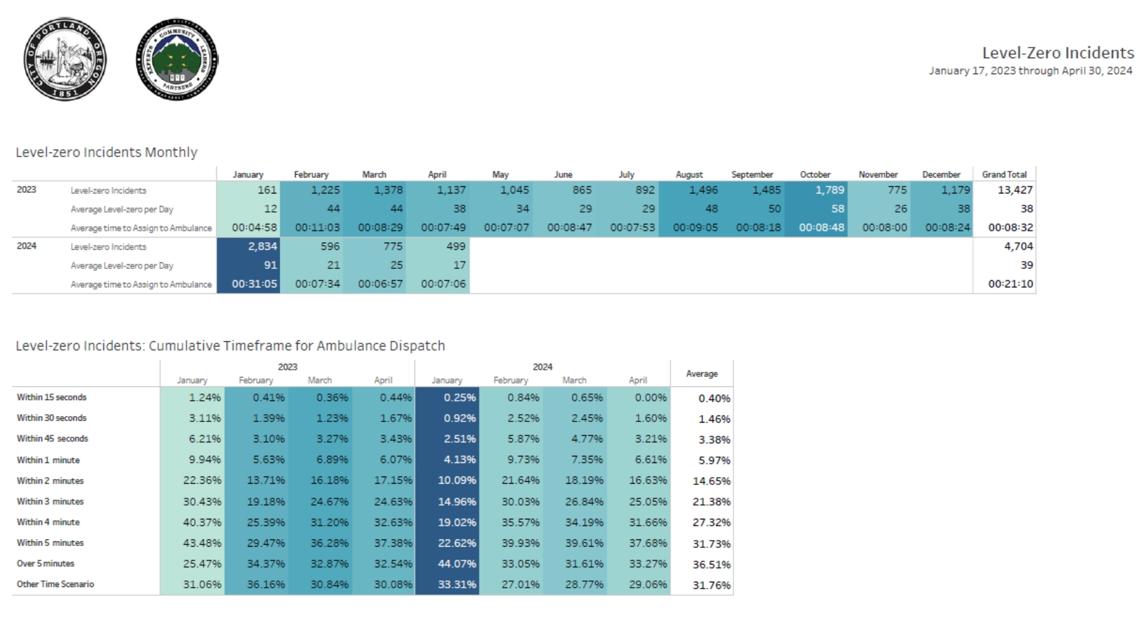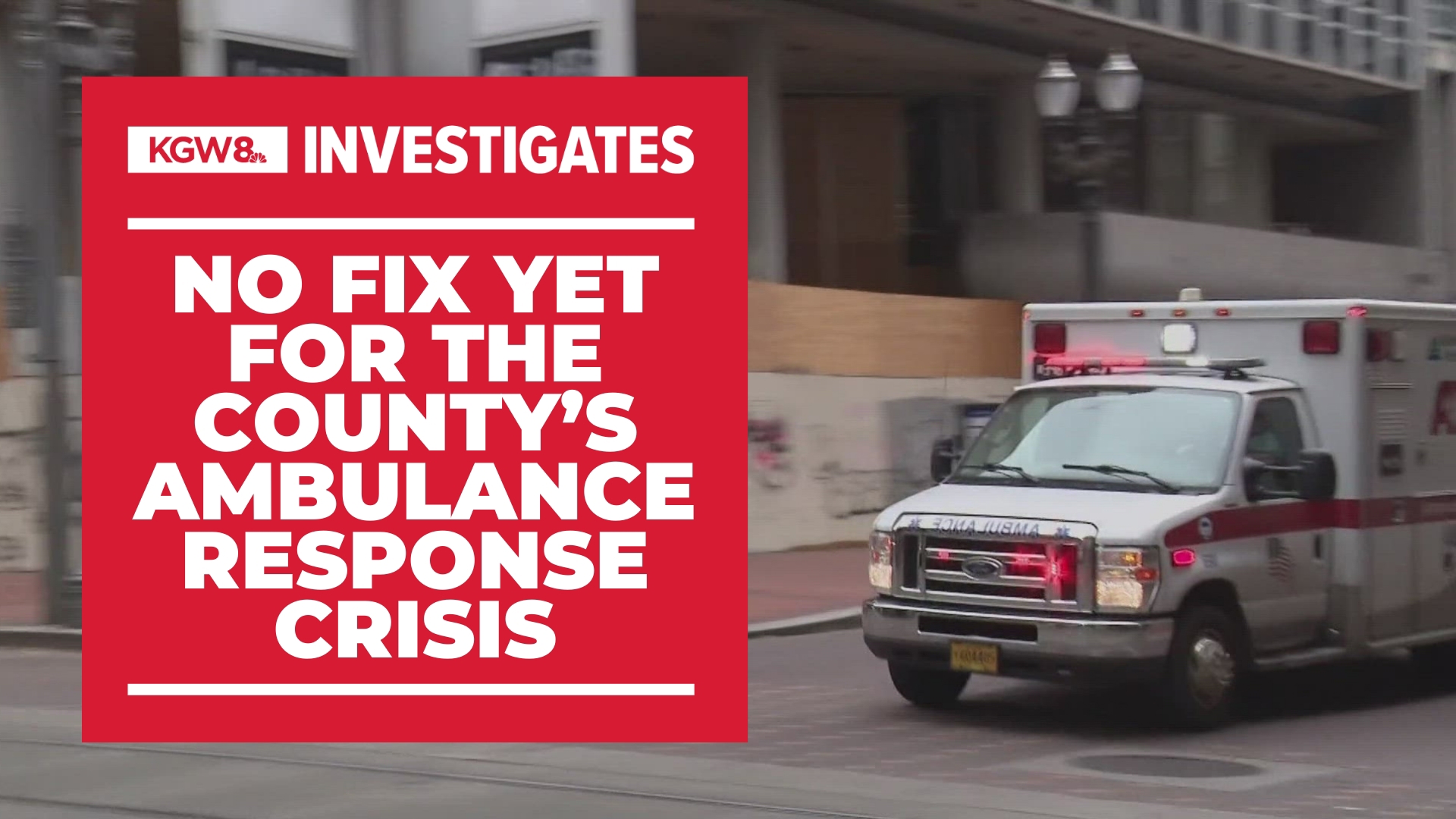PORTLAND, Ore. — An ice storm contributed to record-low response rates for Multnomah County ambulances in January, a particularly dismal month amid a years-long slide in response times for contractor American Medical Response.
Ambulance crews were unavailable to respond to 2,834 emergency calls that month.
Since then, ambulance provider AMR has improved its "Level Zero" response rates year over year — a somewhat encouraging sign as AMR and county leadership remain locked in mediation sessions over the deficiencies in ambulance response.
Beyond the shortage of paramedics, squabbles over fines and the feud over ambulance staffing best practices, the county’s lagging 911 response times remain the core issue.
While AMR has failed to meet response time standards for years, the most concerning metric involves Level Zero cases — situations where all ambulance crews are busy with other calls, which can create dangerously long wait times for 911 callers.
Portland’s Bureau of Emergency Communications reported 2,834 Level Zero calls in January 2024, an average of 91 per day and by far the worst month of performance since BOEC started tracking the metric in January 2023.
It took dispatchers more than 31 minutes, on average, to assign an ambulance crew to a Level Zero call in January — more than triple the average assignment time of Level Zero data from most other months.


After assignment, ambulance crews still need to drive to the location of the 911 caller. Neither BOEC nor Multnomah County track the time it takes for Level Zero ambulances to arrive to a scene once assigned.
An AMR spokesperson said the company believes the January data is "skewed" due to the winter storm that impacted the greater Portland area from January 10 through January 22.
“The improvement shown for February, March and April is encouraging, but we adamantly believe the current measures taken will not produce conditions that meet contract standards, and a total system overhaul is necessary to eliminate Level Zero events from our system,” an AMR spokesperson said in a statement, referencing the company’s desire to switch to a one-paramedic and one-EMT model.
BOEC data does show improvements in Level Zero incidents from February through April, compared to the same months in 2023.
Dispatchers tracked roughly half as many Level Zero cases in these months and lower average ambulance assignment times.
Still, hundreds of people in Multnomah County are calling 911 each month, only to be told there are no ambulance crews available to respond to their emergency.
AMR and Multnomah County leaders have committed to mediation sessions to try and resolve their differences over how to improve ambulance service within the county. The latest session was on April 18 and the next session is scheduled for May 31.
Multnomah County Chair Jessica Vega Pederson told KGW in a statement that she is committed to reaching a settlement with AMR that "guarantees better response times, accountability and service."
“I’m also looking toward the bigger picture as we reevaluate our Ambulance Service Plan to make sure we have the tools at our disposal to serve this community,” Vega Pederson said.
A county spokesperson said the structured third-party mediation sessions have been valuable in promoting "dialogue" and "compromise."
However, neither AMR nor Multnomah County leaders directly responded to a question about the lack of urgency of the discussions — considering the ambulance response problem has been well-documented for more than a year.
Multnomah County data shows AMR reported its best three-month stretch of paramedic hiring from February to April, with a net gain of 10 paramedics.
However, AMR says it’s still short-staffed by dozens of paramedics, and aggressive efforts to provide scholarships to paramedic school won’t solve the immediate need.
“We are still over a year away from these efforts having a meaningful impact to paramedic staffing in Multnomah (County),” an AMR spokesperson told KGW.

